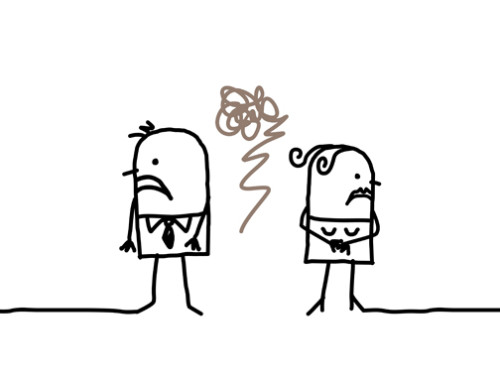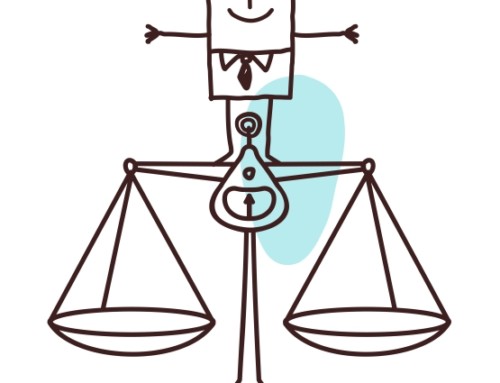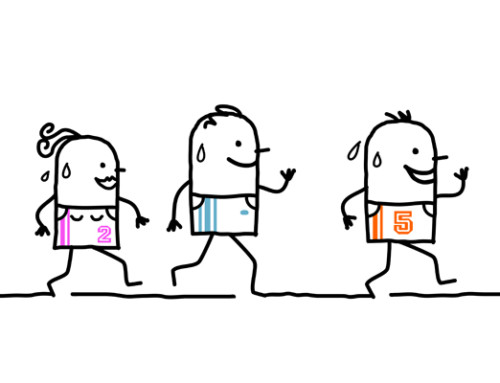In this article, I discuss how bringing information to the top of your mind can benefit you.
Not all information we have in our minds is created equal. That is, some of the information is more at the top of our minds or more ‘accessible’ compared with other information. Information is made more accessible by being reminded of it in various ways. For example, if you watch a television news broadcast which has a story about a plane crash, that plane crash will be more accessible to you compared with information which did not appear in the newscast. The reason accessibility of information is important is that accessible information has a much greater influence than inaccessible information on many variables including our mood, our judgments, our behaviours and our relationships, to name a few. In this article, I will discuss how you can use various strategies to make certain information more accessible so that you will benefit. Many of the examples I cite are from my experiences working with clients as a Calgary psychologist and a Cochrane psychologist.
Make positive information more accessible to improve your relationships
One of the most common reasons couples’ relationship satisfaction goes down is that issues, problems and disagreements come to dominate the relationship. This results in negative feelings and thoughts about your partner and your relationship being more on your mind or more accessible compared with positive thoughts and feelings. Taking steps in couples counselling to make positive thoughts and feelings more accessible is one of the first steps I help couples with whom I work take to get their relationship back on track. I often begin by having them become reacquainted with the positive characteristics they appreciate in each other by having them list these and express them to each other. This exercise brings positivity to the front of each partner’s mind. The greater accessibility of positive information results in the couple beginning to view their relationship and each other in a better light compared with when all they thought about were issues and disagreements. I typically ask the couple to follow up on the exercise by finding ways to having positivity-building time with each other between sessions such as by going on a date. The goal is to have the couple build into their relationship more experiences which make positive characteristics of each other more accessible on a regular basis. If the couple is diligent at this, they are much more likely to view their relationship and each other positively compared with when all that was accessible to them were their issues and disagreements.
Make information more accessible to perform better in sports
Making positive information accessible through visualization will help you as an athlete get back on track if you’re not doing well. For example, sports psychologist and elite athlete JoAnn Dahlkoetter at a pre-marathon talk I attended told the audience how she used this technique to pick up the pace in an elite triathlon in which she was competing. After having not done well in the swim and bike parts of the triathlon and being well back in the pack, she was feeling downcast and was walking for the first part of the run portion. At that point, she visualized one of her past successes in running—a win in a recent marathon. The effect on her mood was almost instantaneous and positive. She quickly was motivated by the accessibility of the positive experience and began running at a faster pace. She passed competitors throughout the run until she finished second in the event. You can also use pre-event visualization to practice performing the way you would like to perform in the actual event. This mental rehearsal leads to the actions you would like to perform being more accessible in your mind during the event which makes it more likely you will perform these actions ‘when the game is on the line.’
Stop doing negative behaviours by making the costs of doing those behaviours more accessible
A common issue clients want to work on is to stop engaging in negative or destructive behaviours such as drug and alcohol use (along with other addiction counseling issues), spending too much time using the computer or video games, and cheating on one’s relationship partner. Many clients with these issues have told me they know what they are doing is wrong but that they ‘can’t help themselves’ in the moment when they engage in these negative behaviours. I have helped many such clients reduce or eliminate these negative behaviours by helping them make the ‘costs’ or downside of performing these behaviours more on top of their minds or more accessible in the moment when they perform them. One easy way to do this is to have a visual cue or reminder of the costs of performing the negative behaviour which you carry around with you. For example, someone who wants to stop cheating on his partner may carry a picture of his partner to remind him when he is tempted to cheat that there is a cost to cheating. Someone whose issue is reckless spending may have with them a reminder of the attractive items they are trying to save money for when they are tempted to make an impulse purchase. A student who wants to get good grades so that they can go to law school to pursue their dream of becoming a lawyer can have with them pictures of a law firm they hope to join one day. This visual reminder will help the student stay focused on studying when they might be tempted to do something instead of studying.
Improve your self-esteem by making positive characteristics of yourself more accessible
Many years ago, I was struck by the results of a study which demonstrate the role of accessibility in improving self-esteem. The goal of the study was to determine how people with high and low self-esteem differ from each other. One major finding was that, contrary to predictions, participants with high self-esteem did not possess significantly more positive characteristics and abilities compared with low self-esteem participants. However, high self-esteem participants were much more likely to be aware of their positive characteristics and abilities compared with low self-esteem participants. For example, they were more likely to list these positive characteristics to describe themselves in contrast with low self-esteem participants. In other words, one of the key factors leading someone to have higher self-esteem is having their positive characteristics and abilities more accessible so that they are aware of these. The take-home message from the study if you have low self-esteem is to make your positive characteristics and abilities more accessible so that you are aware of them. A common way I have my clients in self-esteem counselling achieve this accessibility goal is to have them list their positive characteristics and abilities. Once they have done so, I ask them to post the list in a place where they can see it regularly so they can continue to place their positive self-information at the forefront of their minds. You can also benefit from reviewing this list when you’ve had a bad experience or a bad day which may lead you to view yourself negatively. Countering these negative thoughts about yourself by reviewing your list will make it more likely you can maintain an overall positive view of yourself despite having bad days and experiences.
Improve your mood by using the accessibility principle
There a myriad of ways in which you can use the accessibility principle to improve your mood. I apply these strategies with my clients in depression counselling. For example, regularly scheduling activities you enjoy or excel at will result in positive thoughts about yourself and others being more accessible which will have a positive effect on your mood. I also encourage clients to structure their environments at home and at work (where possible) to remind themselves of their positive experiences and achievements. Using this strategy could include putting up pictures of memorable vacations you’ve had or of positive times you’ve had with your partner, friends or family. You can have displayed in a visible place reminders of your achievements such as awards or medals. My personal favourite application of this strategy is drinking coffee many mornings out of a cup I bought at the Boston Marathon when I ran it. The result is that when I drink my morning coffee, I not only enjoy the taste but I also get a positive start to my day by reminding myself of one of my proudest accomplishments.
May you have a Merry Christmas and a Happy Holiday,
-Dr. Pat









Leave A Comment